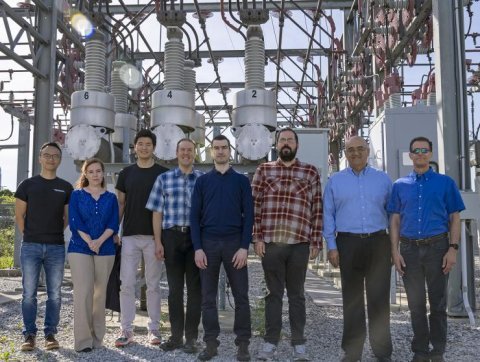
Replacing the potent greenhouse gas SF6 in high-voltage circuit breakers with a clean alternative is critical as the U.S. looks to upgrade its aging electrical infrastructure.
A team of researchers from Georgia Tech, led by Lukas Graber, associate professor in the Georgia Tech School for Electrical and Computer Engineering and in collaboration with Mississippi State University, has recently been awarded nearly $4 million from the Department of Energy’s Advanced Research Projects Agency-Energy (ARPA-E) to develop a three-phase SF6-free AC high-voltage circuit breaker. Fittingly, the proposed design is called TESLA (Tough and Ecological Supercritical Line Breaker for AC), acknowledging AC electricity pioneer Nikola Tesla.
Although well-known greenhouse gases like carbon dioxide (CO2) and methane contribute the most emissions, it is a lesser-known greenhouse gas, sulfur hexafluoride (SF6), that owns the title as the “most potent.” The man-made gas has a global warming potential 23,900 times than that of CO2 and an atmospheric lifetime persistence of up to 3,200 years.
Like other greenhouse gases, SF6, plays a significant, albeit indirect, role in everyday life, as it is a key component in high-voltage circuit breakers and switchgear for electric power systems. For the U.S. to effectively decrease carbon emissions to goals set at the 2021 United Nations Climate Change Conference (COP26), the country’s electrical power grid will need substantial updating, which includes finding an alternative to SF6 electrical equipment
“High-voltage alternating current (AC) SF6-insulated circuit breakers can be found in most electrical substations in the U.S. and around the world. They are vital mechanisms for a reliable and resilient power grid,” said Lukas Graber, associate professor in the Georgia Tech School for Electrical and Computer Engineering. “But any leaks of SF6 are extremely bad for the environment due to its greenhouse gas effect.”
In addition to Graber, the team includes Juergen Rauleder, assistant professor in the Daniel Guggenheim School of Aerospace Engineering, and Lauren Garten, assistant professor in the School of Materials Science and Engineering.